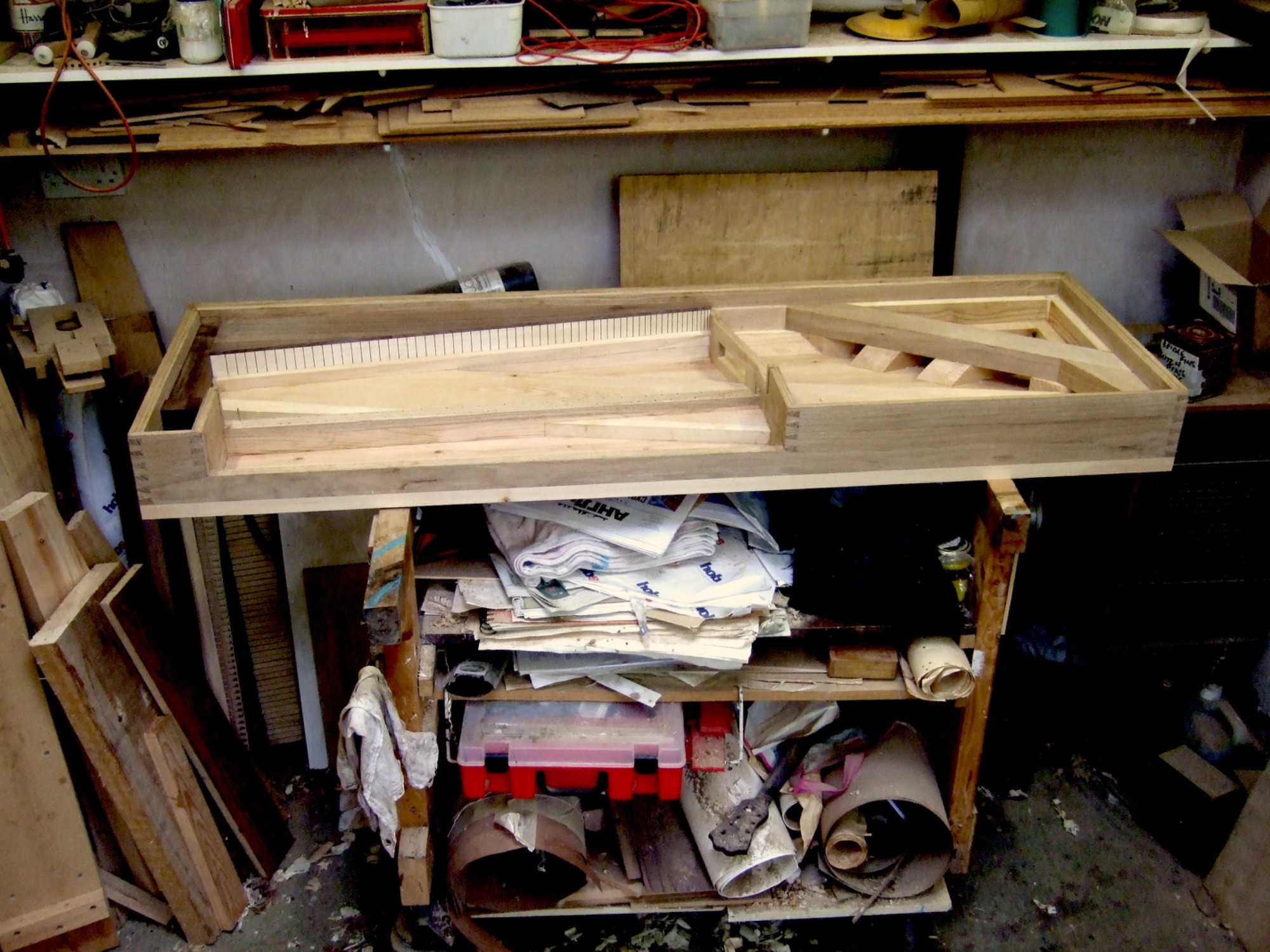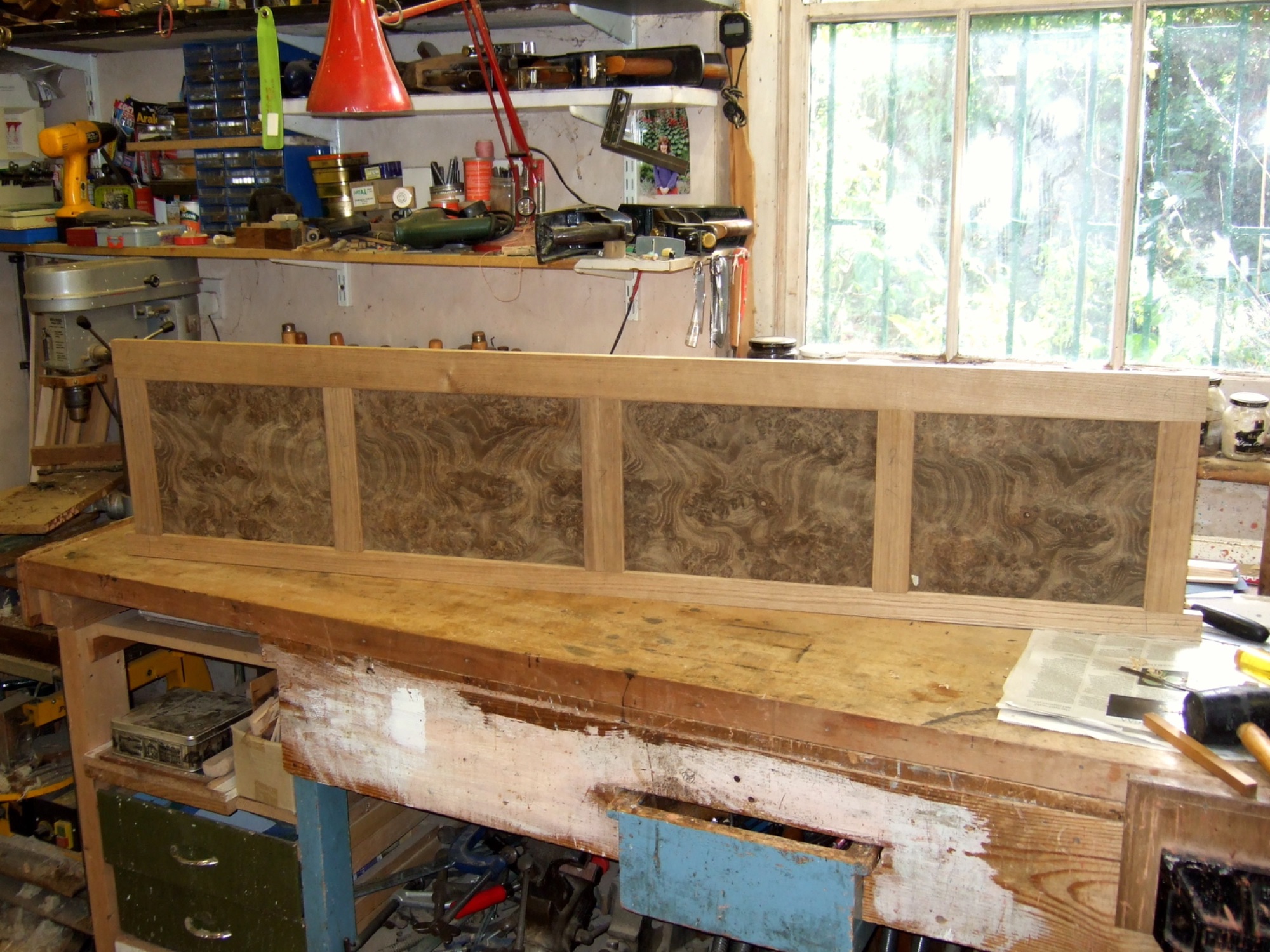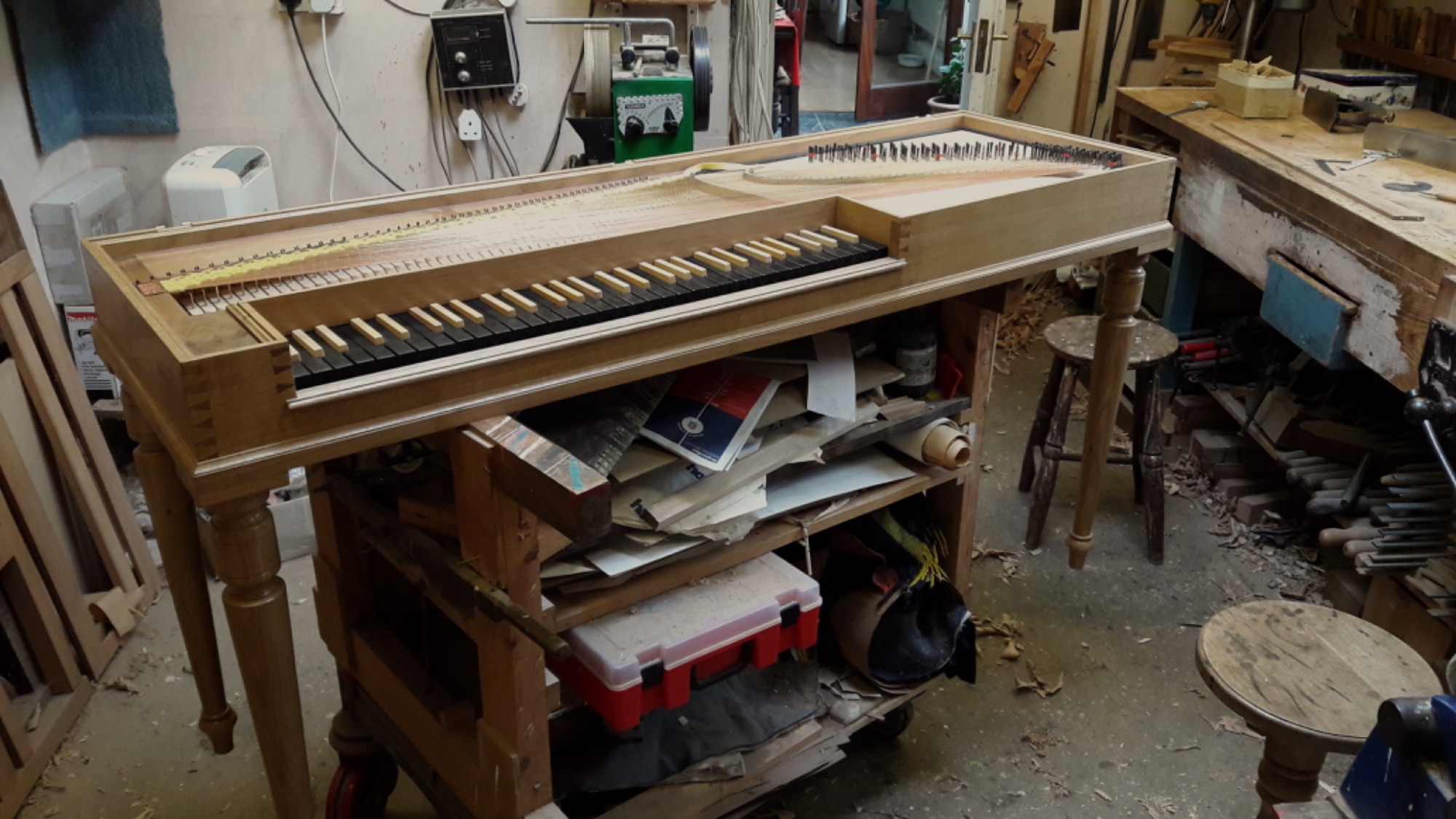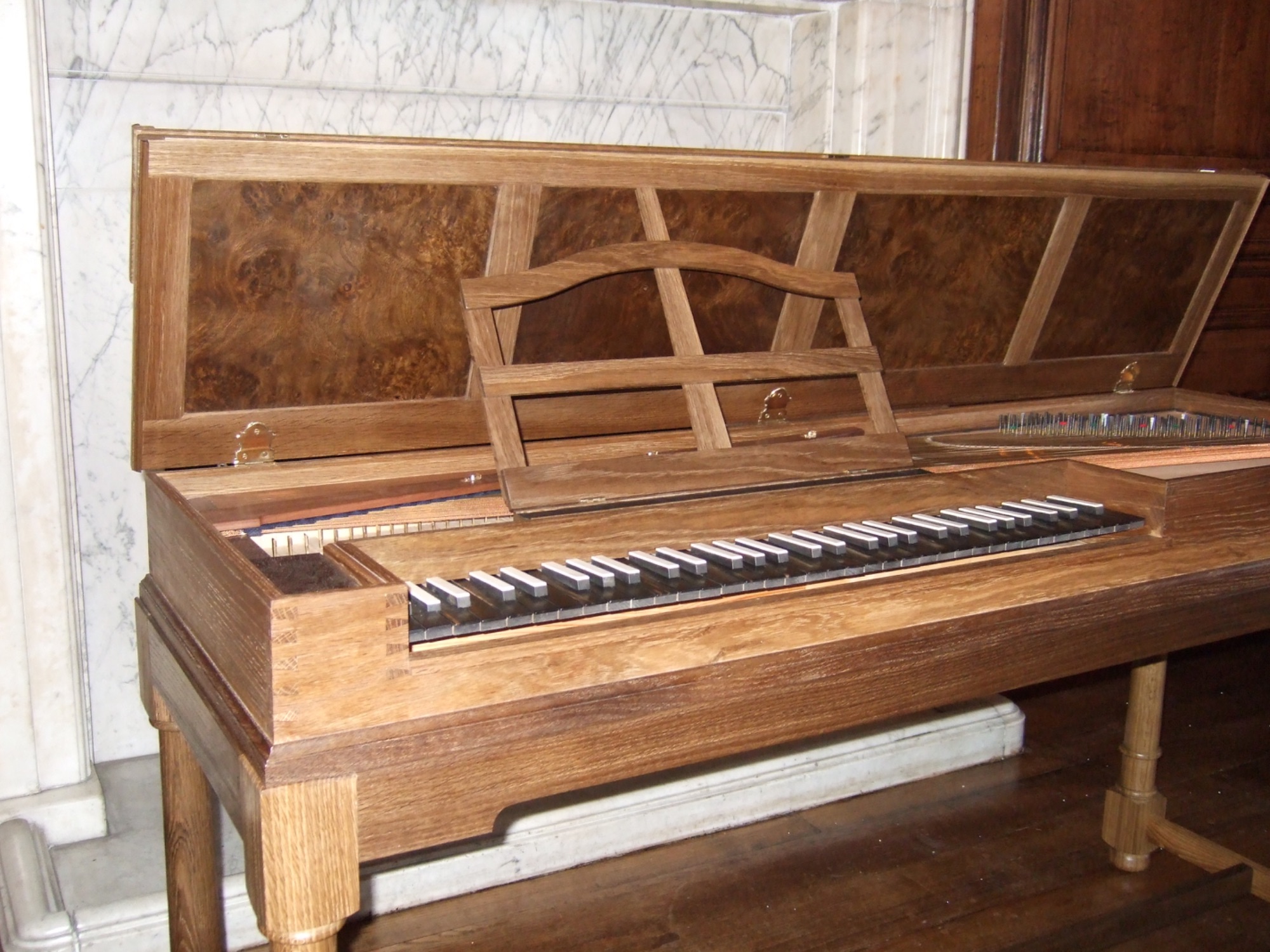





The Schiedmayer clavichord is based on one made by Johann Christoph Georg in 1796, which is now in the Museum of Fine Arts in Boston. The Schiedmayers were a family of instrument makers and one of Johann Christoph Georg’s brothers went on to make pianos. He started the family firm in Stuttgart which is still flourishing.
This is a large unfretted instrument with a compass of over 5 octaves, FF to g’’’, and is ideal for later repertoire including CPE Bach, Haydn, and Mozart (and perhaps even early Beethoven and Mendelssohn). The naturals are covered with ebony with ebony arcades on the fronts, and the sharps are bone-topped pear wood. The pitch can be either A 440 or A 415. In common with many Saxon clavichords the bridge has grooves across the top which keep the strings tightly against the pins and reduce the need for heavy down-bearing. There is a set of “counter pins” at the edge of the hitch pin rail which shorten the after lengths, and an over-rail. All these combine to give the clavichord quite a firm touch. The sound is well balanced with a sustained and sonorous bass and a bright and incisive treble.
The case is made of oak which is stained dark brown with ammonia (fumed oak). It has an eight panelled lid and a restrained stand with turned legs based on a classical column shape. I have designed a music desk which incorporates a lid stick.